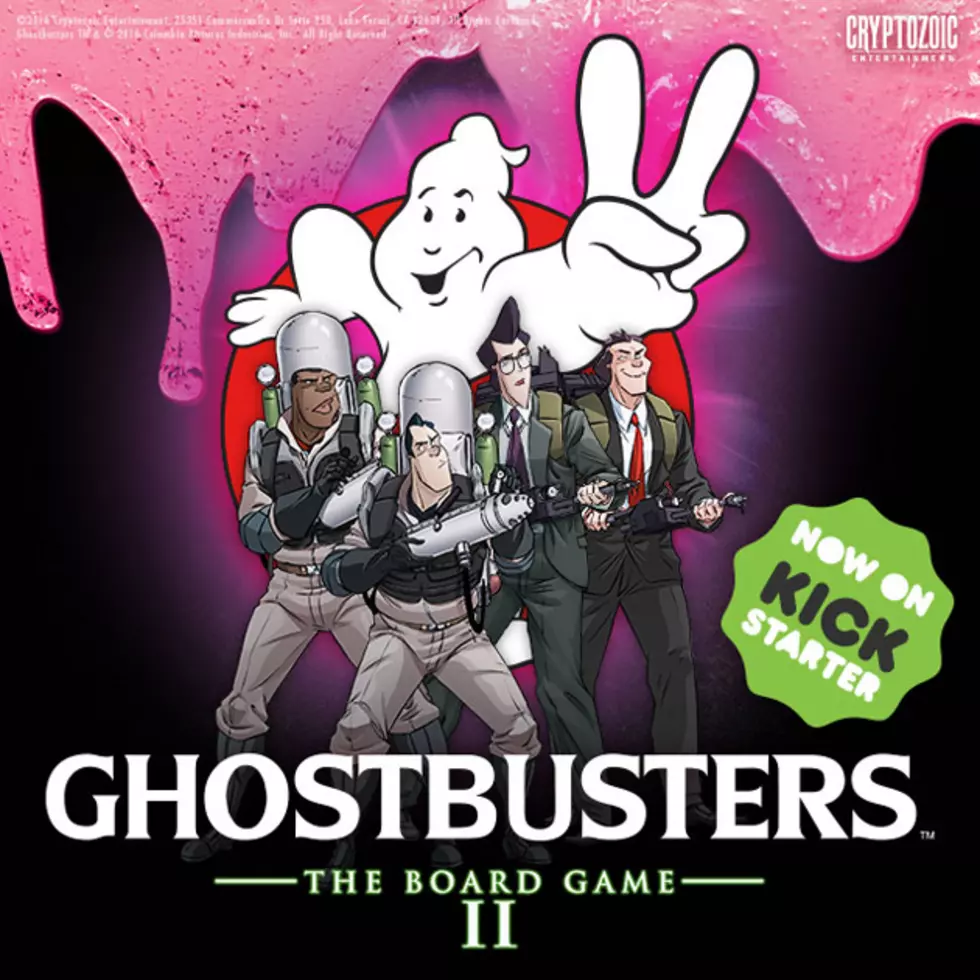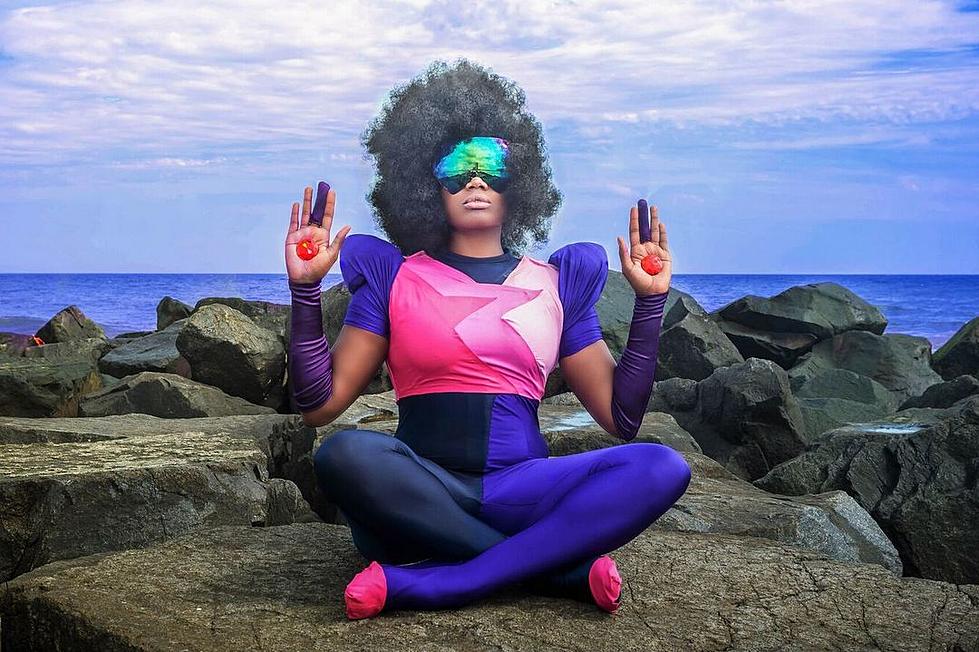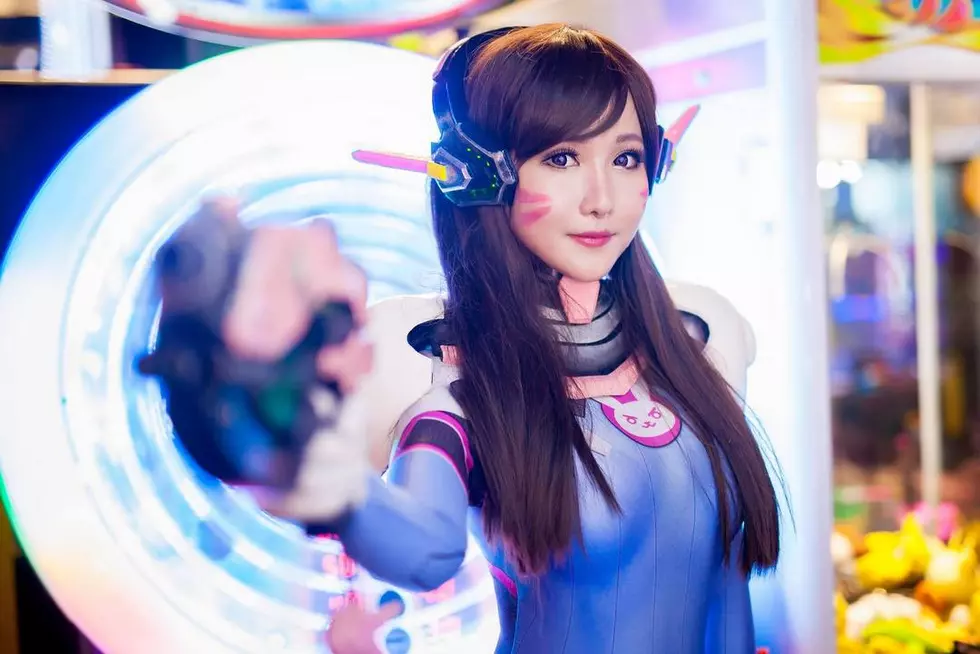
We Wanted To See Vigo: Game Designer Mataio Wilson Talks ‘Ghostbusters II: The Board Game’
Last year, Cryptozoic Entertainment launched a Kickstarter campaign to fund the creation of a high-end, scenario-based Ghostbusters board game, and to call it "successful" is understating things quite a bit. That initial campaign raised over $1.5 million, and delivered a game that seemed like it had everything, including a massive roster of Ghostbusters that went well beyond the four characters from the movie to include video game and comic book originals, and two --- yes, two --- different versions of a giant Stay Puft Marshmallow Man to fight.
But that doesn't mean there wasn't room for a sequel. This week, Cryptozoic has launched another campaign for Ghostbusters II: The Board Game, and reached their initial funding goal of $250,000 in under two hours. To find out more, we spoke to game designer Mataio Wilson about the process of creating the first game, how the second is adding to the formula they've already set, and why the Ghostbusters are really just a very funny D&D party, right down to the dungeons.
ComicsAlliance: When you started to design the first Ghostbusters game, was there ever any time when you were considering doing something that wasn't a scenario-based game?
Mataio Wilson: Yes, we had variants for the gameplay, and we still have stuff on the back burner that we'd like to release afterwards, but we needed to focus on the storytelling. The XP games had something to go with for a narrative scenario, otherwise, you were looking at a four-hour game to get an experience of everything that we wanted to offer.
CA: How did the idea of giving those characters their specific abilities come up? I love that you were able to incorporate ideas of how their personalities work in the films, like Peter Venkman getting stronger every time he has a comedy take with a ghost and gets slimed.
MW: We had a fine balance to try to find the thematic element, and also what makes the experience fun. Luckily, Ghostbusters already kind of balances that itself by introducing things that move the plot along, and are exciting and fun. We looked at those, and thought "Well, these already fit themselves into a classic party element." You have someone up front getting the attention of their target, you have someone doing research on it, with the high wisdom score, you have the healer type, the collector who's trying to help out, and then you have the backup person, not just the jack of all trades, but who helps out with every aspect of the party.
We had a lot of experience playing in that style, from roleplaying games to miniatures and tactical games, so it just came down to who gets what, and at what point do we give it to them?
CA: I've never thought about the Ghostbusters as being that traditional RPG party, but they really are.
MW: [Laughs] Yeah, that led us to looking at other properties like "What else exists in this kind of universe where you have these defined roles?" There are a few other things we're looking into, but Ghostbusters already has that setup, which is why I think it makes some great video games as well.
CA: As someone who backed the initial Kickstarter campaign for the first game, it was really interesting for me to see that it just kept going. It seemed like you never stopped adding things until the end of the campaign, with new pieces, new villains, new storylines. When you start designing a game like this, is it a process of coming up with too much and having to cut things back for the final version? Was Ghostbusters the reverse of that?
MW: What's nice is that when I first started working on the game, I mean, you can throw everything you can at any project. You see what sticks, what makes sense, and then you have to consider how much any one game can take. How much can one person take in and keep track of before it becomes too much to hold onto? I'm an old-school Dungeons & Dragons player, so I have an infinite well of information you can throw at me, and I'll just keep track of it, but for someone who's maybe only a Ghostbusters fan, and this is their first venture into miniatures or tactical games, we didn't want to alienate them.
We took the widest swath of game ideas and broke them down into categories. What's wonderful about Kickstarter is that it let us expand those categories. In the game design process, you lay a whole bunch of stuff out, and then you start making cuts, and those cuts either go into a possible expansion, or they just get left on the floor, and that's the last you see of them, or maybe even get implemented into a different project entirely. With Kickstarter, everything could stay in the project. There would be times when we'd be like "this is awesome, but it might be too much for the retail game" or "it might be too much for people to track." So we could set it aside for the Kickstarter.
Then there were also parts where we'd say "Well, the Kickstarter campaign needs to be as exciting as the retail game, so can we highlight things that we introduce in the retail game to give it a spotlight?" Then, there's too much to cover from either side, so we'd have to create a variant that we'd release online. "This is something we like, but we thought it would be too much for the average retailer, buyer, or Kickstarter to try to incorporate."
Myself, I'm a completionist. When I see something being introduced, I'm like "I want that!" I'll incorporate it into my game and make sure I use it. But when you start throwing too much stuff at me, it's the thing where you have too many options, so you end up choosing none. We tried to walk that fine line, and this new Kickstarter allows us to take a lot of that stuff that we had to leave out from that first campaign and put it back in, like equipment cards. That's something we wanted to do from the beginning, but it was one of those things where we thought it might be too many layers to start the game with that. We were able to set it aside to refine it, and I'm glad we did, because with all the other layers we put onto it, we needed them all together, not just stacked on everything else.
CA: That's surprising and interesting to me. I got the Special Edition --- I'm like you in that completionist aspect --- and that first game ended up with not just all of these villains from the movies, comics and cartoons, but ten playable characters, including the team from the comics with Janine, Melanie Ortiz and Kylie Griffin. When we got the teaser, my first thought was "What else can there possibly be?!"
MW: [Laughs] One of the wonderful things about the Ghostbusters universe is that it's not like a lot of other properties, where you get everything up front and say "this is the true representation of the property, it has all the characters you recognize," and then if you have to do a sequel, you have the illusion of scraping things together and doing fan-art versions of things just so you have a hole to plug.
With Ghostbusters, it's a huge universe, and Sony is generous and gave us everything that was available, except for the current 2016 movie, which I'm really looking forward to. We were able to get both movies, the video game, the cartoon, the comics, the roleplaying game --- which is really good --- the International Ghostbusters... There's just so much stuff we were able to pick from, so we never felt like we had to start making things up. With all of the Ghostbusters that already exists, there's an endless number of things to pull from before we get to go back to Erik Burnham and ask him "if we were making new Ghostbusters, what would they be?"
A nice thing was that after we published the game, the instruction book had a short comic in the front of it, and that got rolled into the canon of the universe. All the crazy stuff that I was making up and passing through Erik Burnham became a part of the real universe, and can now be quoted as having happened to these characters. So if we ever get to the point where we felt like we'd used everything possible, we ca still go to the content creators and work with them to create new content. It's one of those magical spaces where we never feel limited.
CA: When I finally saw the pieces in the initial announcement, I feel like I was the last person to realize that Ghostbusters II: The Board Game would be at least partially based on Ghostbusters II: The Movie.
MW: [Laughs] Yeah. What's nice is that the first campaign allowed us to tap into the first movie and then expand on it with the comic book storylines and the video game. The second one, we're taking a very similar approach. The basic plot line is that these ghosts are back, as opposed to "Remember that fun scene? We'll let you play it!" We don't want to try to recreate a scenario or setting that already exists on film, or video games, or comics, or even how you feel it would play out in your imagination. We want to say, if those characters existed in this setting, what would they do? What would their motivation be? What would their goals be? What would you do to try to resolve it? You're not just doing an exact adaptation where you know what's going to happen and there won't be any surprises.
That's the same type of route we're taking with this game. We want to see the Scolari Brothers and Vigo the Carpathian, and as many elements as we can, but we want to be able to tell a new story with them.
CA: The sheer amount of stuff that came with the first game made it very easy for me to not realize that Vigo wasn't there. He was the only big omission from that first game. Did you hold the Ghostbusters II movie stuff back because you knew early that you were going to make a sequel? You had to know early on that the Kickstarter campaign was going to end up being a huge success.
MW: We hoped. Nothing's ever guaranteed, so no matter how successful we do on one project, you never know if you're going to get a second one. But I can always cross my fingers.
In the same way that we set some content aside, like a certain mechanic or element from the first game that we were able to incorporate into the second, we just really crossed our fingers like "I hope this goes well and people like what we're doing!" It's the difference between raising a lot of money on Kickstarter and people actually enjoying the game once they have it in their hands. That's the true test. If that passes through, we can work on putting all of those elements together.
But we did have a big spreadsheet of game elements, and a section on Post-Kickstarter, and what happens after this if we do well. Can we do it this way? Do the current elements hold enough strength to stand on their own, or do they need to be bolstered with things from the second movie?
The more we were working on it, the more we could see that not only does Ghostbusters stand on its own, but Ghostbusters II stands on its own, too. If there are any spaces that we needed to fill with content, we had this huge area of toys and games and comic books to tap into, to not just fill those holes, but bolster them. That's always been our goal, to make an amazing game without Kickstarter, and then use Kickstarter to make it more amazing.
CA: One thing that came to mind when you talked about restructuring Ghostbusters as a game was that Ghostbusters II really fits that pattern of a D&D adventure. There's a big evil guy who looks like Dracula, they literally go through tunnels, a statue comes to life at the end...
MW: [Laughs] There's also weird random encounters! They go into a tunnel and they encounter heads on spikes and a ghost train, and that's it! It doesn't have anything to do with the movie before or after that, it's just a fun random encounter. That's what I was thinking of when we added Event Cards to the game.
One of the things that really makes the second movie distinct from the first was that they just added all of these fun things. The Titanic pulls up and the passengers all get out, and you never see that for the rest of the movie. It's just like "That was fun, thanks for throwing that in there for us." It's not just fanservice, it feels like they're doing things that they wanted to see, that would be fun for us to see on the screen, and that's part of the inspiration for these events. While you're searching out Goo Piles, you flip over a card that says "Now this is happening," besides the plot of the main game and the scenario that you're in. It's a subplot that you can address as well.
CA: So aside from Event Cards and Equipment Cards, are there other specific new elements?
MW: One minor thing is that the Goo Piles are a stack of cards, so when you search or investigate, you reveal the top card of the Goo Pile deck, and that tells you whether you're drawing a card from the Equipment deck, which is yours now, or if you're revealing an Event card that needs to play out, or if you're getting a MacGuffin --- a big key item that you need to pass a certain challenge. They're unique things that exist in the Ghostbusters universe that you need in order to move forward. There are some that are used that you carry with you, and some you only use once. We're going to be looking at introducing other things throughout the campaign that can play off of all three of those ideas.
CA: Okay, so I have to ask: In the first game, there's a big, giant Stay-Puft Marshmallow Man figure, and we got an Ecto-1 figure that you could move around the board. Are we going to see a big Statue of Liberty?
MW: We have a tile to move around on, because one of the goals we had was that, to move on the Statue of Liberty, you can have the four Ghostbusters in it at the same time. Ecto-1, you can't drive around while shooting out the windows, because then it just becomes a giant tank that just drives and everyone shoots out of it. That's what it was in one of the earliest versions of the game, and while it was fun, it just broke the game. The second time around, while we were working on how to incorporate the Statue of Liberty, we did want you on the board and able to target things, and we wanted there to be a benefit there. She's slower than Ecto-1, because she takes those big steps, but what we're showing off at the launch is that while you're in the Statue of Liberty, you ignore all obstacles. You're so high up that you can shoot over fences, over ghosts, and she ignores obstacles as well because she's stomping right over the borders on the map, but she moves slowly.
So yeah, while you're in this moving fortress, you are a big tank, where everyone's next to each other. You can remove slime, trade equipment and ghosts, so there's a fun element to those scenarios where you can work as a group, and then jump off to achieve other objectives.
She's currently a chipboard tile, but you'll have to watch the Kickstarter to see if that changes.
[As of this post, the Kickstarter's $275,000 stretch goal to include a 100mm miniature of the Statue of Liberty for certain tiers has been unlocked. - Ed.]
The Ghostbusters II Board Game Kickstarter will conclude on May 9, and you can check out the latest updates and details here.
More From ComicsAlliance

![Mezco’s One:12 Collective Makes Marvel and DC More Memorable Than Ever [Toy Fair 2017]](http://townsquare.media/site/622/files/2017/02/IMG_2587.jpg?w=980&q=75)







